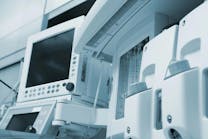Q: “In a recent review of the department I work in, a surveyor cited us after finding some old ‘degraded/worn out instruments’ they felt should not be in use. Can you give me some insight on a possible reply?”
A:
I was always told to “walk your talk,” or, “If you cannot speak to your practice, you don’t have a policy that supports your practice.” My first question is: do you have a policy that deals with the degradation of medical instruments within your SPD, MDRD, CSSD, etc.? Addressing the degradation of instruments would be found in your inspection policy.
As to your question about a possible reply, I have to say, “No,” because the surveyor cited you based on the fact you could not answer the question.
Having a well-defined, robust standard policy and trained staff on inspection and maintenance is critical to ensuring optimal performance and being in compliance with 42 CFR 482.41(d)(2), which states, “Facilities, supplies, and equipment must be maintained to ensure an acceptable level of safety and quality.”1 Thus, devices and instruments that are worn or in default after usage will not get put back into service.
I also suggest establishing a regular time frame with your repair company for refurbishing instruments and keeping an activity log of instruments taken out of service. Share this log should you ever be audited to show damaged instruments are not placed back into service. If your department uses an electronic count sheet/instrument tracking system, you can showcase to the surveyor (before a tray gets sterilized) the various tasks required by the staff to help ensure damaged, worn, non-functioning, and unclean instruments are removed from service.
Industry guidelines and instructions for use (IFU) include forms of inspection and maintenance as standard practice, though some only give limited details. Medical facilities should follow a maintenance strategy determined by partnering with their various manufacturers and use evidence-based observations and clinically relevant products to accomplish this goal of providing clean and functional medical devices.
After reviewing many IFUs, these types of general statements are made by OEMs concerning inspection to ensure damaged instruments are not placed back into service.
- The useful life of these devices depends on many factors including the method and duration of each use, and the handling between uses. Careful inspection and functional test of the device before use is the best method of determining the end of serviceable life for the medical device. However, for certain instruments the end of life has been defined, verified, and specified with either a number of uses or an expiration date.
- Carefully inspect each device to ensure that all visible contamination has been removed. If contamination is noted, repeat the cleaning/disinfection process.
- After each cleaning and disinfection process, check the instrument to make sure it is clean, it functions properly and it has not suffered any damage (e.g., bent, broken, fractured, or worn parts). Discard any damaged and defective instruments and replace.
To summarize, each department must ensure all medical instruments and devices are clean and functional, damaged instruments are not placed back into service, and they have a simple SOP statement to cover all situations in an ever-changing environment. Here is my suggestion for a policy with basic wording that should cover all medical devices and allow you to be able to adjust as you learn more information to document the “why?” in your SOP.
All medical devices will be visually (e.g., using various methods like magnifying glass, microscope, borescope, etc.) checked to be clean (e.g., using various methods like protein, blood, and ATP testing) and functional (i.e., testing devices specifically when possible) before being sterilized.
To accomplish this task, the department will review each medical device, the IFUs, standards, guidelines, and various technical literature on what material should be used to test the various medical devices within our department for cleanliness and functionality of those devices and frequencies. Testing results will be documented within the assembly record. This will help ensure all medical devices are clean and functional before sterilization and damaged instruments are not placed back into service.
A routine refurbishing practice will be established with the proper vendors to be included in our inspection program ensuring damaged instruments are not placed back into service. When possible, examples of faulty instruments (pictures) will be used to help ensure we have a robust inspection process. Various methods will be used to identify instruments that need to be reviewed/repaired/taken out of service (using repair tags).
Understand that the implementation of any quality improvement or risk-based program does not always prevent incidents from happening; however, it helps reduce and understand them better if they do occur. Consider the example in your question (i.e., the auditor found some “old” instruments). It happens. Research the incident, look at the data, and work on improving your process.
So, my answer is to have a robust quality program and policy (as described on inspecting instruments), all staff properly trained, and (if any surveyor asks) the documentation that can back up what you do—“Walk your talk.”
Reference:
-
Dept. of Health and Human Services. Code of Federal Regulations: Condition of participation: Physical environment. Title 42 [Public Health], Standard No. CFR 482.41(d)(2): Facilities. HHS. https://www.ecfr.gov/current/title-42/part-482/section-482.41#p-482.41(d)

Stephen M. Kovach
Stephen M Kovach, BS, CFER, started in the medical field in 1975 as a sterilization orderly and has worked in many positions within the Healthcare Industry. He presently is Clinical Educator Emeritus at Healthmark, A Getinge company.





